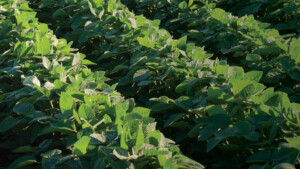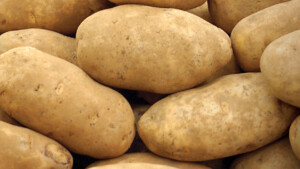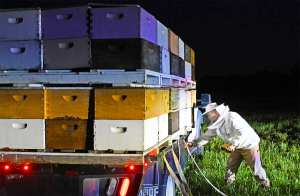OM 1-3 mm
Benefits of Use:
• Uniform granular size promotes even coverage/distribution of humic/fulvic acid for sustainable carbon benefit
• Long-term soil organic-matter building
• Increased water penetration
• Increased flocculation of clays
• Promotes conversion of fertilizer into plant-available food
• Increases soil nutrient mineralization
• Sustainable soil microbial activation
FAQs
Related Products
Related Case Studies

Huma® Organic 1-3 mm Dry Humate vs Biochar in Soybeans, With ROI of 4:1
Background Humates are used as soil amendments that have shown to improve crop production. The usage of biochar as a soil amendment has gained traction and has also shown to increase crop yield. Objectives The aim of this study was to test how preplant soil application of organic (OMRI-Listed) humates (Huma® OM 1-3mm) and biochar

Huma® and Zia Pueblo Farm Corn Project
Background Many small-scale farms (1-2 acres each) are established in Zia Pueblo community near San Ysidro, New Mexico. Huma® Inc. was asked to establish an experimental farm in the tribal community that could demonstrate the usage of beneficial agricultural inputs producing high-yield crop and preserving the health of the soil. Huma® humic-based products stimulate plant

Huma® OM 1-3 mm Organic Humates Improve Potato Yield by 9%, With 5:1 ROI
Background Scientific research shows that humic and fulvic acids are biostimulants—enhancing nutrient availability and uptake, improving plant root growth and mass, and impacting both crop yield and quality. Objective The focus of this study was to assess the effect of pre-plant application of a raw humic product on potato yield. Materials & Methods One week
Related Blog Posts

This Week in Ag #38
When you’re carving your Halloween pumpkins this week, be sure to thank a bee. That’s because pumpkins are not self-pollinating plants. Unlike cotton and soybeans, where pollen produced within a flower fertilizes the ovary of the same flower on the same plant, pumpkins have specific male and female flowers across their vines. So they need bees to carry pollen between the flowers. Pumpkin growers will rent bee colonies during the growing season to ensure better pollination and higher yields.

Fred Nichols’ Insights on Microbiome and the Biologicals Boom
Recently, CropLife interviewed several industry experts, including Huma’s Chief Marketing and Chief Sales Officer, Fred Nichols, to discuss the rapid growth of biological products in agriculture, including biostimulants, biopesticides, and biofertilizers. Fred answered important questions about the microbiome’s role in soil health, industry’s understanding of it, and the new innovations being developed for sustainable farming.

Research Report: Fertilgold® 3-2-4 and Micros I Liquid Fertilizers Increase Organic Cantaloupe Yield 120%
In this study of Fertilgold® Organics macronutrient (Fertilgold® 3-2-4) and micronutrient (Fertilgold® Micros I) liquid products compared with a grower’s standard treatment on organic cantaloupes applied under field conditions in Arizona, the Fertilgold® Organics treatment powered by a proprietary Micro Carbon Technology® resulted in a 120% yield increase with a 3-to-1 return on investment (ROI).






